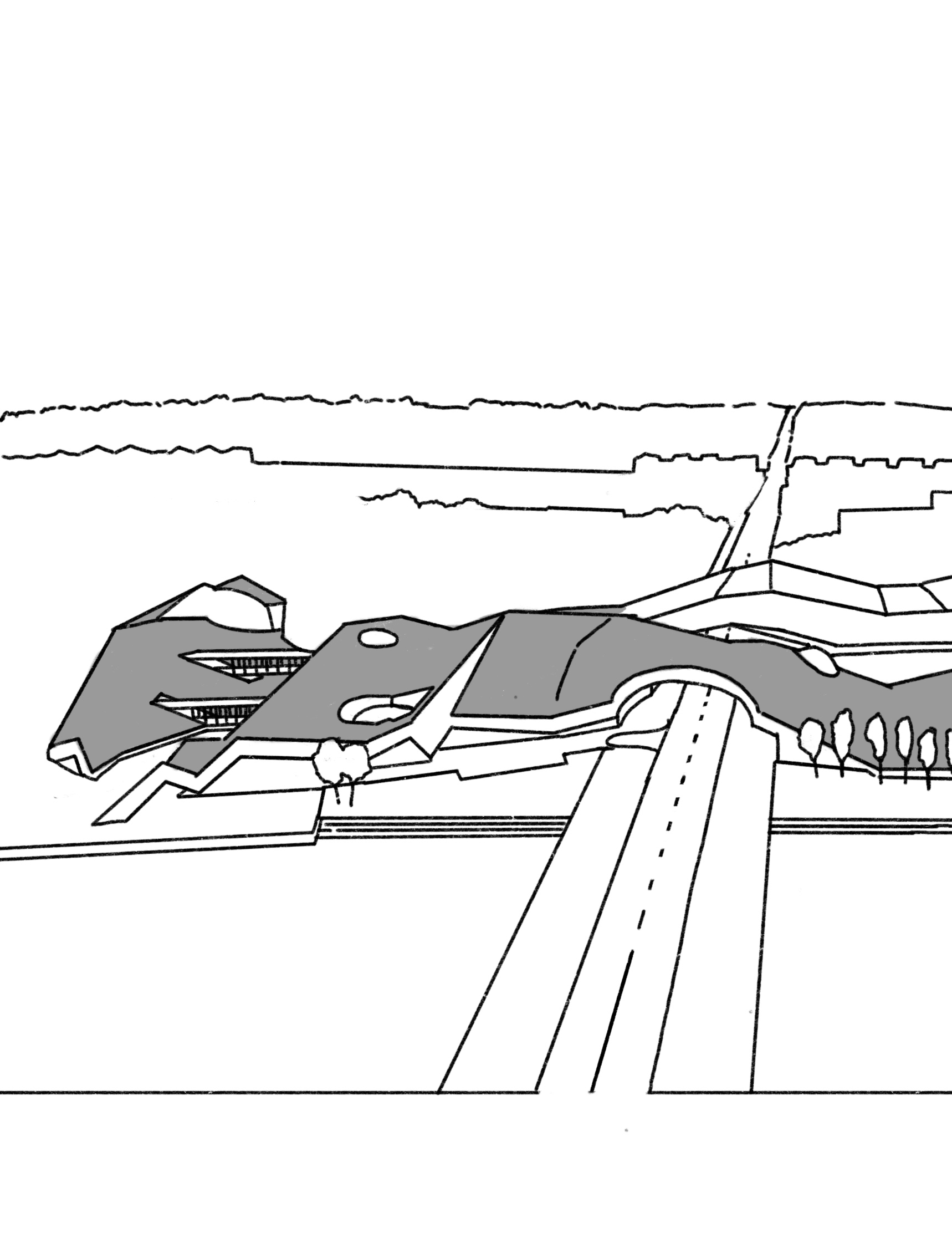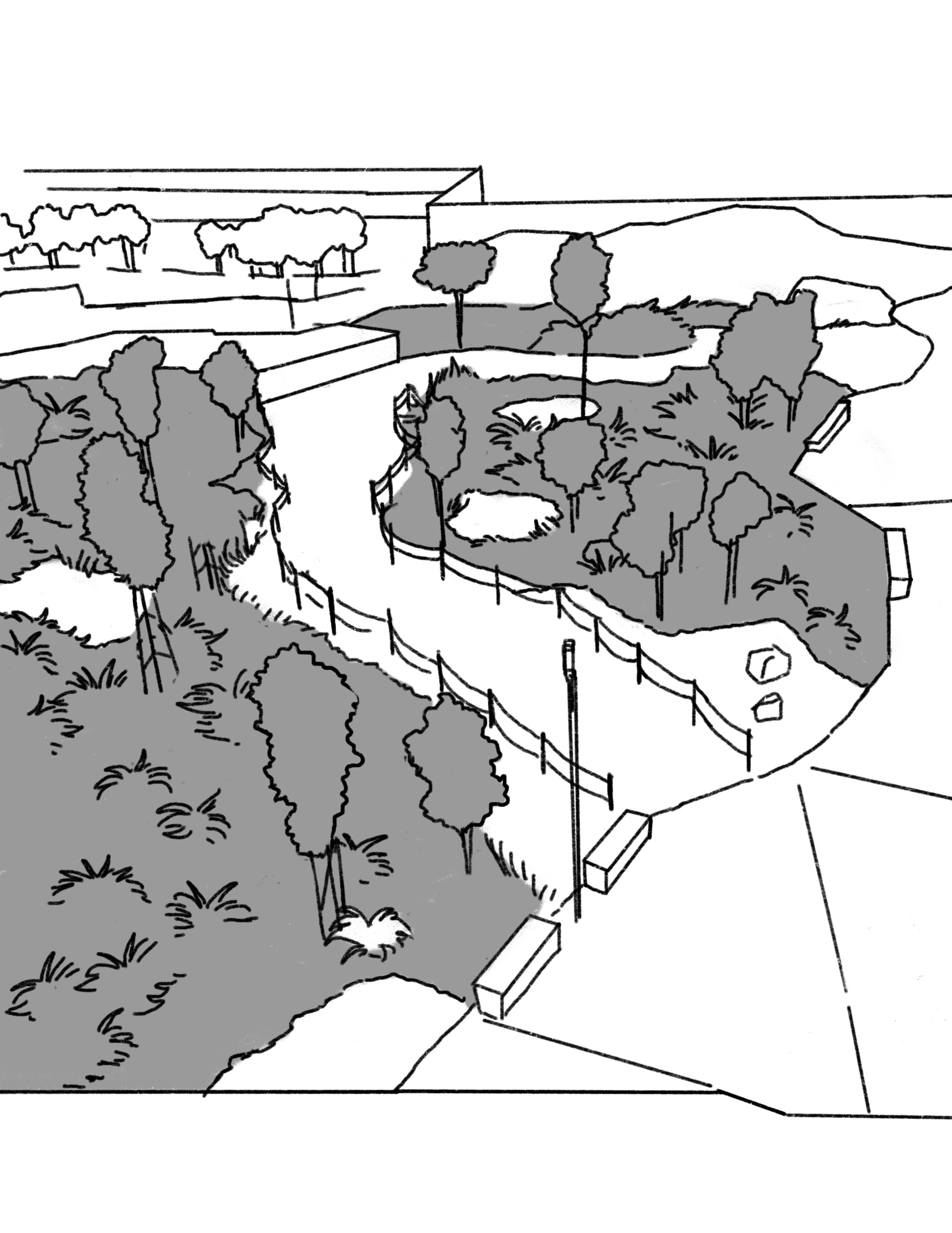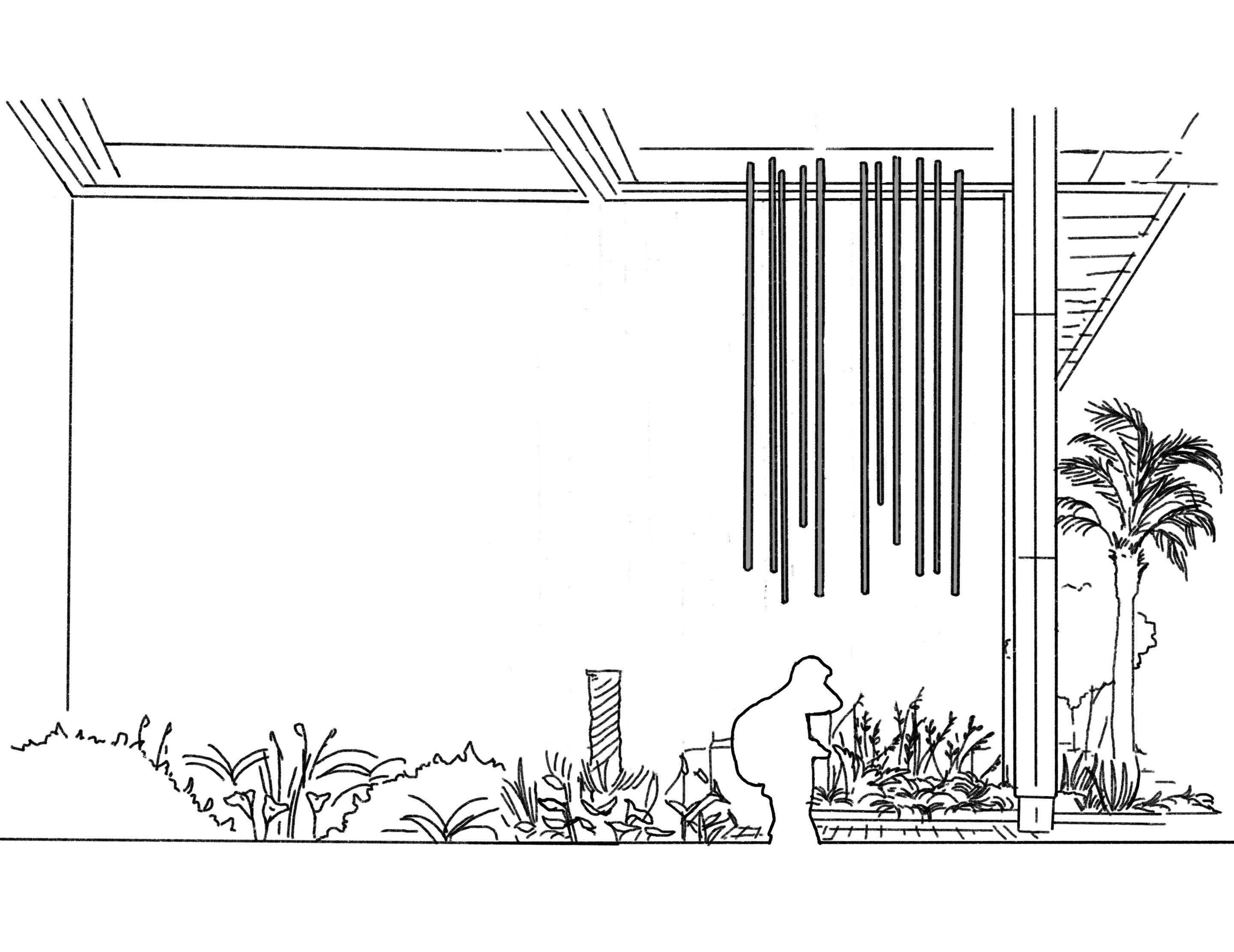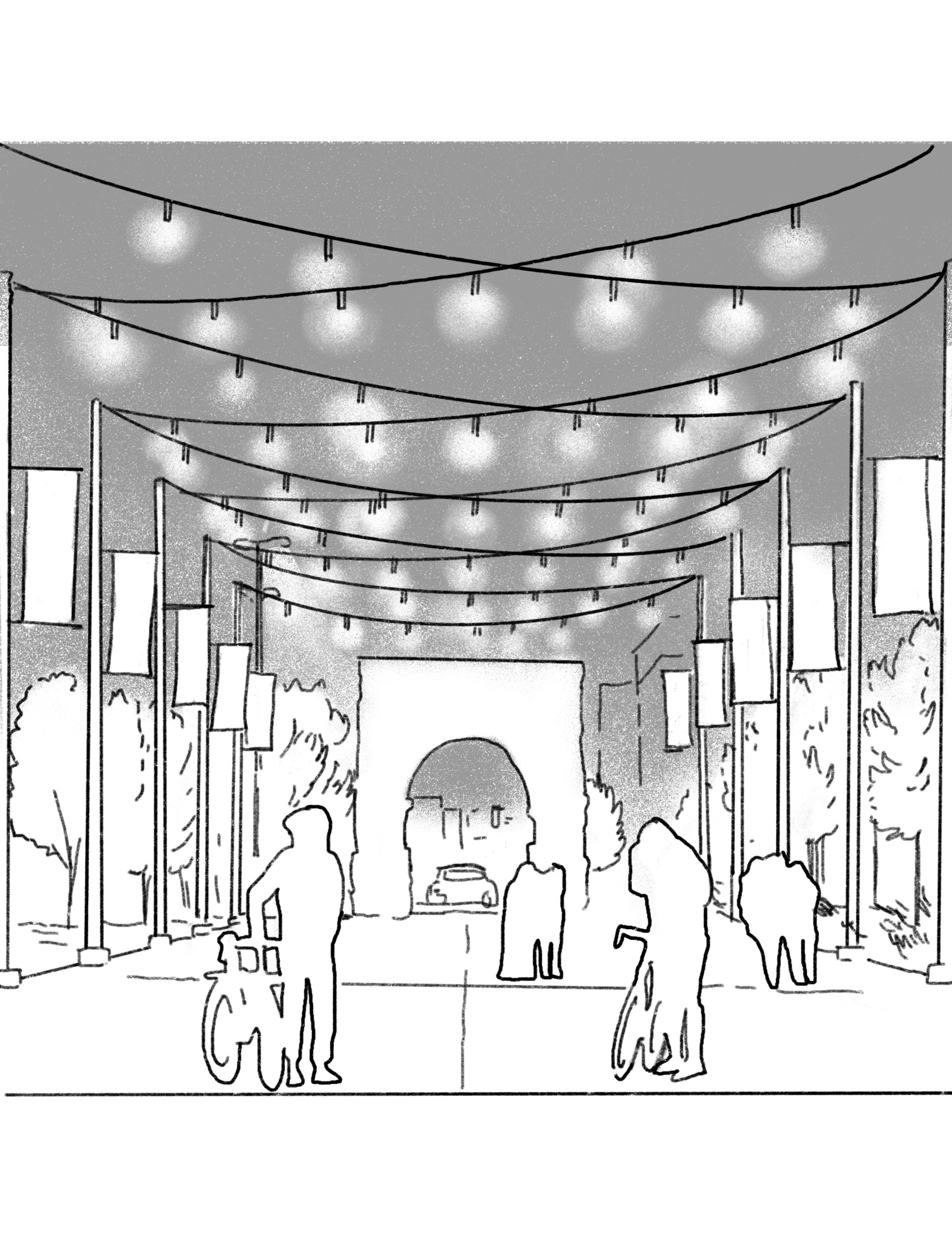Strategy
Mitigation
Reduce Operational Energy
Operational carbon emissions are typically linked to the energy required to operate and maintain a site over time. The installation of green roof systems atop structures can improve building energy performance by moderating heat flow. Additional operational carbon can be mitigated by pursuing design solutions that require less intensive maintenance like mowing.
Reduce the energy demand of buildings (heating/cooling)
Options
…by insulating the building with green roofs and/or walls.
…by designing roof decks and hardscape with high-albedo materials to reduce energy use.
…by preventing heat gain by reducing solar exposure (with trees or canopies).
…by harnessing radiant heat from sun in winter (with deciduous trees).
…by defusing wind force to buildings in the winter (with evergreen windbreaks).
Case Study
At Giant Interactive’s Headquarters, SWA Group worked with the architect to incorporate an extensive green roof on the complex folding and dipping surfaces on-structure and on-grade. The 15,222 square meter surface insulates the building with 10 inches of lightweight planting soil and a mix of liriope, carex, sedum, oenothera, spirea and other species placed according to exposure. In addition, above the structural slab, a layer of rigid insulation reduces the temperature inside by another ten degrees.

Eliminate or reduce the need for gas-powered maintenance
Options
…by eliminating lawn areas requiring mowing.
…by eliminating hedges requiring trimming.
…by eliminating other elements that necessitate powered maintenance tools (blowers, chainsaws, etc.).
…by designing for and specifying the use of electric, rather than gas powered maintenance equipment.
…by designing low maintenance, naturalistic, and/or native plant landscapes.
Case Study
At Tilal Park, SLA designed a planting palette with only native plant species. In addition to lower water demands, the careful research that went into the 40 plant list, informed by previous work at Al Fay Park, ensures no high maintenance areas, eliminating the need for lawn mowers, leaf blowers, and hedge trimmers.

Reduce the energy demand of irrigation systems
Options
…by using building water (like air conditioning condensate).
…by capturing stormwater or recycling on-site water for later use.
…by choosing a gravity-fed drip system rather than a pump-powered system.
Case Study
Reduction of water inputs is key to ration a scarce resource, but creative reuse also reduces the energy demand inherent in water delivery. At Orange Mall, at the center of the Arizona State University campus, Colwell Shelor was able to harness air conditioning condensate—a waste product—as a hyper local irrigation source. The student pavilion generates about 1,000 gallons of water between the peak use months of June-September and is delivered via sculptural brass pipes from the roof area.

Reduce the energy demand of lighting systems
Options
…with program scheduling.
…with a reduced number of luminaires.
…with low-wattage bulbs (like LEDs).
…by locating circulation where there is already existing lighting.
…with ambient light sensors or motion detectors.
Case Study
At Gene Leahy Mall, Atelier Ten lighting designers helped OJB reduce energy by designing with low wattage LEDs. All light sources are LED and full dimmable. Iconic existing orange post lights were updated with new lamps, reducing wattage by 85%. During hot summer days, the playground especially is well used at night, even until 11pm, when the park closes.
